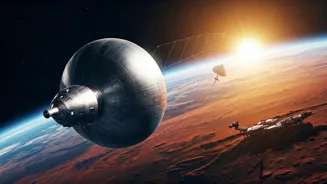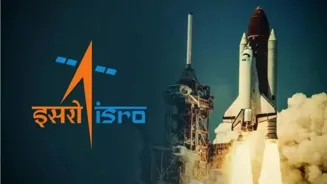A Journey from 35 kg to 75,000 kg
Narayanan recalled ISRO’s humble beginnings, pointing to the first indigenous rocket developed under Dr A.P.J. Abdul Kalam, which weighed 17 tonnes and could place just 35 kg into LEO. “Today, we are conceiving a rocket that can place 75,000 kg in orbit. The rocket is of 40-storey building height,” he said, calling it a landmark in India’s technological evolutionA Packed Agenda for 2025
ISRO’s upcoming roadmap includes:- NAVIC (Navigation with Indian Constellation) satellites to boost India’s independent GPS system.
- The new N1 rocket, which is expected to serve as the backbone of heavy-lift launches.
- The launch of a 6,500 kg American communication satellite, signalling growing global trust in India’s cost-effective launch vehicles.
- Deployment of the Technology Demonstration Satellite (TDS).
- Launch of GSAT-7R, a military communications satellite for the Indian Navy, which will replace the ageing GSAT-7 (Rukmini).
Expanding India’s Satellite Fleet
At present, India has 55 satellites operational in space, serving navigation, communication, defence, meteorology, and earth observation. Narayanan said the number will be tripled in the next three to four years, with ISRO planning to scale up both domestic missions and global commercial launches.Global Context and Significance
The announcement places India in the league of advanced spacefaring nations like the US, China, and Russia, all of whom are pursuing super-heavy launch vehicles. NASA’s Space Launch System (SLS) and SpaceX’s Starship are designed for similar payload capacities, while China is working on the Long March 9.Industry experts believe ISRO’s proposed rocket could become a game-changer for India’s human spaceflight programme (Gaganyaan), deep-space exploration, and even future lunar and Martian missions. A vehicle of this magnitude would allow India to launch entire space station modules, large clusters of satellites, and heavy interplanetary probes in single missions.
Boost for Defence and Economy
The rocket project also carries strategic weight. A larger fleet of communication and surveillance satellites will enhance India’s defence preparedness in the Indian Ocean Region (IOR). Economically, the move could boost India’s share in the global commercial satellite launch market, currently dominated by SpaceX, Arianespace, and Roscosmos.From Modest Beginnings to Mega Ambitions
The journey from 35 kg payloads to 75,000 kg rockets encapsulates India’s space rise over six decades. Once reliant on foreign launchers, ISRO today has earned global credibility through cost-efficient missions like Chandrayaan-3, which landed on the lunar south pole, and the Mangalyaan Mars mission.With the mega rocket project now on the horizon, India’s space programme is aiming for an era where launch capacity is no longer a constraint, but a strategic advantage.














